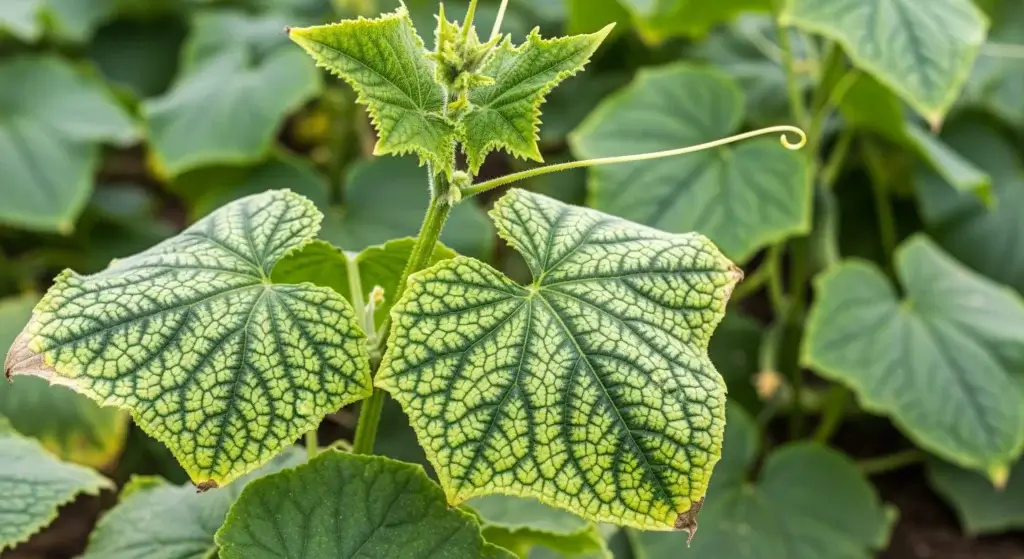
Growing crisp, fresh lettuce without using chemical pesticides might sound like a challenge, but it’s absolutely possible!
Lettuce is a favorite for home gardeners, but it’s also a favorite for pests like aphids, slugs, and caterpillars.
Instead of resorting to synthetic pesticides, you can use natural and sustainable methods to keep your lettuce pest-free.
In this guide, we’ll explore effective organic strategies to protect your lettuce and ensure a healthy harvest.
Common Lettuce Pests
Before tackling pest control, it’s important to know what you’re up against.
Here are some of the most common lettuce pests:
Aphids
Aphids are tiny, soft-bodied insects that love to suck the sap from lettuce leaves.
They often cluster on the undersides of leaves, causing them to curl, yellow, or wilt.
If left unchecked, aphids can weaken your plants and spread diseases.
Slugs and snails
These slimy pests are most active at night or on rainy days.
They munch on lettuce leaves, leaving behind large, irregular holes.
Slugs and snails can quickly ruin a crop if they’re not managed.
Caterpillars (cabbage loopers, armyworms)
Caterpillars are leaf-eating machines.
Cabbage loopers and armyworms chew through lettuce leaves, creating ragged edges and large holes.
Their feeding can cause significant damage, especially to young plants.
Leaf miners
Leaf miners are the larvae of small flies that tunnel inside lettuce leaves.
As they feed, they leave winding, white trails or blotches.
While they rarely kill plants, they can make leaves unsightly and less appetizing.
Flea beetles
Flea beetles are tiny, jumping insects that chew small, round holes in lettuce leaves.
They’re especially problematic for young plants, as their feeding can stunt growth and weaken seedlings.
Cutworms
Cutworms are the larvae of certain moths and are particularly destructive to young lettuce plants.
They feed at night, cutting through stems at the soil level and killing seedlings outright.

Natural Pest Control Methods
Keeping pests away from your lettuce doesn’t have to mean using harsh chemicals.
There are plenty of natural, eco-friendly ways to protect your garden.
Here’s a detailed guide to help you keep your lettuce healthy and pest-free:
Physical barriers
Sometimes, the best defense is simply keeping pests away from your plants. Here’s how:
- Row covers: Use lightweight mesh or floating row covers to shield your lettuce from insects. These covers let in light and water while keeping pests out.
- Copper tape: Place copper tape around garden beds or pots. Slugs and snails avoid crossing it, protecting your plants.
- Collars around seedlings: Create collars from cardboard or plastic and place them around young lettuce plants. This prevents cutworms from reaching and damaging the stems.
Companion Planting
Some plants naturally repel pests or attract helpful insects.
Try these combinations:
- Marigolds: Plant marigolds near lettuce to deter aphids and nematodes.
- Chives and garlic: These strong-smelling herbs repel aphids and caterpillars.
- Dill and fennel: These attract beneficial insects like ladybugs and lacewings, which feed on pests.
- Nasturtiums: These act as a trap crop, drawing aphids away from your lettuce.
Natural sprays and solutions
Homemade sprays can be effective and safe for your lettuce. Here are a few options:
- Neem oil spray: Works well against aphids, flea beetles, and caterpillars.
- Garlic and chili spray: A natural repellent for aphids and slugs.
- Soap and water spray: A simple mix that suffocates soft-bodied pests like aphids.
- Diatomaceous earth: A fine powder that dehydrates and kills soft-bodied insects on contact.
Attracting Beneficial Insects
Encouraging predatory insects can naturally control lettuce pests.
Some of the best beneficial insects include:
- Ladybugs: These cute beetles love to eat aphids.
- Lacewings: Their larvae consume aphids, caterpillars, and other pests.
- Praying mantises: These predators eat a variety of harmful insects.
- Parasitic wasps: They lay eggs inside caterpillars, reducing their numbers.
To attract these beneficial insects, plant flowers like alyssum, dill, and yarrow around your lettuce garden.
Handpicking and traps
For larger pests like caterpillars and slugs, manual removal is often the best solution:
- Handpick caterpillars and slugs: Check your plants in the early morning or evening and remove pests by hand.
- Beer traps for slugs: Place a shallow dish filled with beer near your lettuce. Slugs are attracted to it and will drown.
- Sticky traps: Use these to catch flea beetles and aphids.

Creating a Healthy Lettuce Environment
A thriving lettuce garden starts with a healthy environment.
By focusing on soil health, proper watering, smart planting practices, and regular monitoring, you can help your lettuce grow strong and resist pests naturally.
Here’s how to create the best conditions for your plants:
Soil health
Healthy soil is the foundation of a thriving garden. Here’s how to keep it in top shape:
- Add organic compost: Compost enriches the soil with nutrients, helping your lettuce grow strong and resilient.
- Use mulch: Mulch helps retain soil moisture, suppresses weeds, and keeps the soil temperature stable.
- Avoid over-fertilizing: Too much fertilizer can attract pests like aphids. Stick to natural, balanced fertilizers to keep your plants healthy without overdoing it.
Proper watering
Overwatering can increase disease and attract pests, while underwatering weakens plants.
Follow these watering tips:
- Water in the morning: This gives leaves time to dry before nightfall, reducing the risk of fungal diseases.
- Use drip irrigation: Drip systems deliver water directly to the roots, keeping leaves dry and minimizing the chance of disease.
- Keep soil moist, not soggy: Lettuce likes consistent moisture, but overwatering can lead to root rot and attract pests. Check the soil regularly and adjust as needed.
Crop rotation and spacing
Rotating crops reduces the buildup of pests that overwinter in the soil.
Best practices include:
- Rotate crops: Avoid planting lettuce in the same spot year after year. Rotate with crops like onions, carrots, or legumes to disrupt pest life cycles.
- Space plants properly: Proper spacing improves air circulation, which helps prevent fungal diseases and makes it harder for pests to spread.
Regular monitoring
The best defense is early detection. Check plants regularly for signs of damage or pests:
- Inspect under leaves: Look for aphids, caterpillars, or other pests hiding on the undersides of leaves.
- Check for damage: Watch for chewed edges, holes, or white trails (a sign of leaf miners).
- Act quickly: At the first sign of trouble, use natural remedies like neem oil or handpicking to address the issue before it gets out of hand.

Conclusion
Growing pest-free lettuce without chemicals is possible with the right strategies.
By using natural pest control methods, maintaining healthy soil, and monitoring your plants, you can enjoy a fresh, organic lettuce harvest without the need for synthetic pesticides.
Not only does this approach protect your health, but it also benefits the environment and promotes a balanced garden ecosystem.



